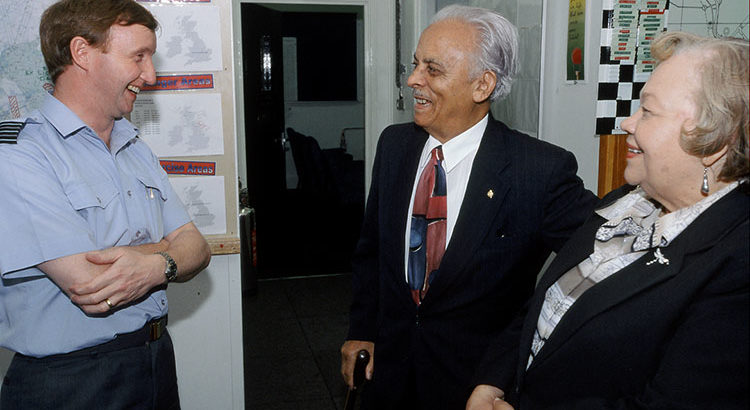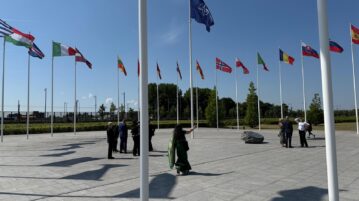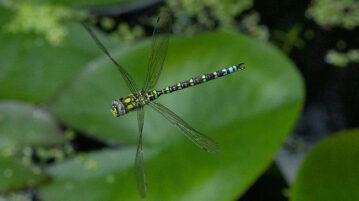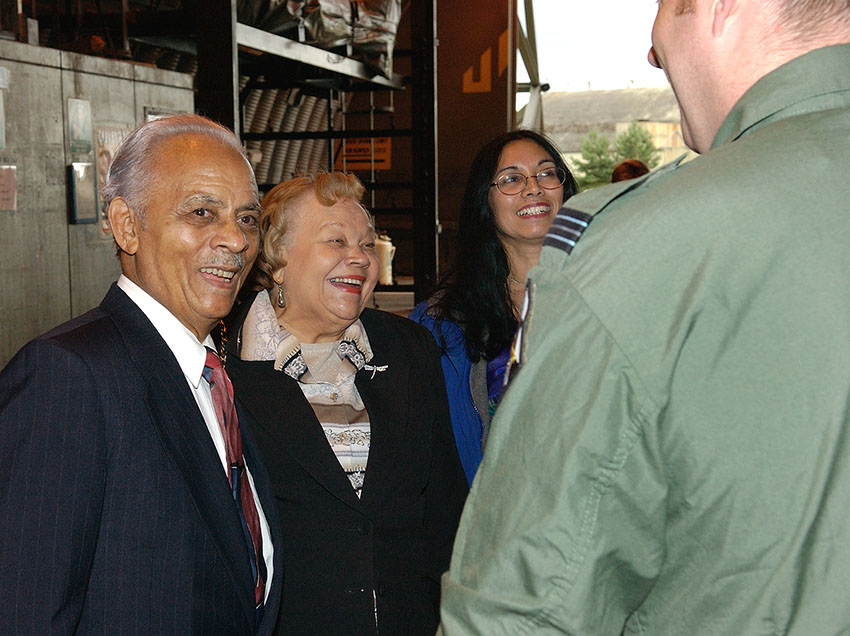 On July 12, 2004, whilst in Scotland for the latest Heartstone ‘Festival of Flight’ exhibition event, Lt Col Herbert Carter and his wife, Mildred Carter were taken on what was to be a uniquely memorable and historic visit to RAF Leuchars, home to several of the RAF’s frontline Tornado squadrons.
On July 12, 2004, whilst in Scotland for the latest Heartstone ‘Festival of Flight’ exhibition event, Lt Col Herbert Carter and his wife, Mildred Carter were taken on what was to be a uniquely memorable and historic visit to RAF Leuchars, home to several of the RAF’s frontline Tornado squadrons.Lt Col Carter is one of the last surviving members of the 99th Squadron, the very first squadron of the Tuskegee Airmen, the black pilots who became famous for having won their right to fly fighter aircraft during World War II against the intense racial prejudice of the time. The sentiment of the day was ‘black men can’t fly aeroplanes’. Not only did they prove this wrong, they went on to fly the fast jets of the day as bomber escort on multiple missions into Nazi Germany with a safety record so high that it was they who were called upon repeatedly for this purpose. It was said, if you wanted to get home, it was the Tuskegee Airmen you had to have there with you. Numerous books have been written and films have been made about them, what they achieved, how they won ‘against the odds’ and how they were in many ways the forerunners of the American Civil Rights Movement led by Martin Luther King.
Less has been said about Mildred Carter whose story only became known whilst she was in Scotland for ‘Festival of Flight’. This quiet, dignified lady was, as we discovered, the first black American woman to gain a pilot’s licence in the southern USA also in the same period. Fighting prejudice on both fronts, racial and gender, was an even more remarkable story leading to a special programme on BBC’s Newsnight being made about her. So, the proposed visit to RAF Leuchars was special in many ways. It was an acknowledgement by the fast jet fighter pilots of today from one of the most elite bases in the UK as to what the Carters had achieved in their time. It was also an opportunity for the Tornado pilots to share their aircraft and their love of flying with a veteran, who, once strapped into the Tornado was clearly at home in an environment he had just stepped back into after so many years. It was after all a fast jet and Col Carter knew all about them. RAF Leuchars have provided ‘behind the scenes’ access to Heartstone and are one of the bases featured in ‘Festival of Flight’.
The visit to RAF Leuchars also acknowledged one other aspect of the Tuskegee Airmen’s campaign at the time. The RAF was not segregated on racial grounds and there were a few black pilots who flew both fighter fast jets and bomber aircraft. This was in fact used as an actual example by the Tuskegee Airmen to dispel the myth that ‘black men can’t fly aeroplanes’.
You can follow the RAF Leuchars story and that of other air bases who participated in ‘Festival of Flight’ by clicking on the link below. Click on the Tornado thumbnails and you will see some of the most spectacular images from the story.. Click on any of the images to fill the screen and the location of the image will appear at the bottom of the screen:
 |
 |
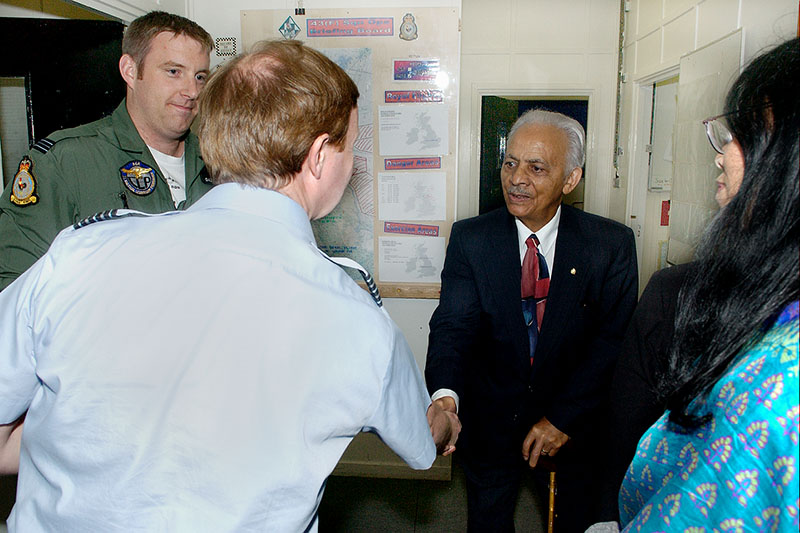 |
 |
 |
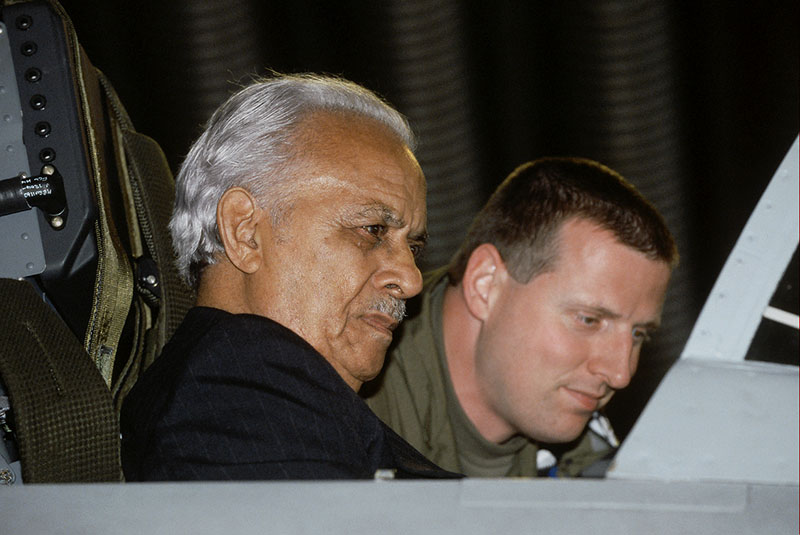 |
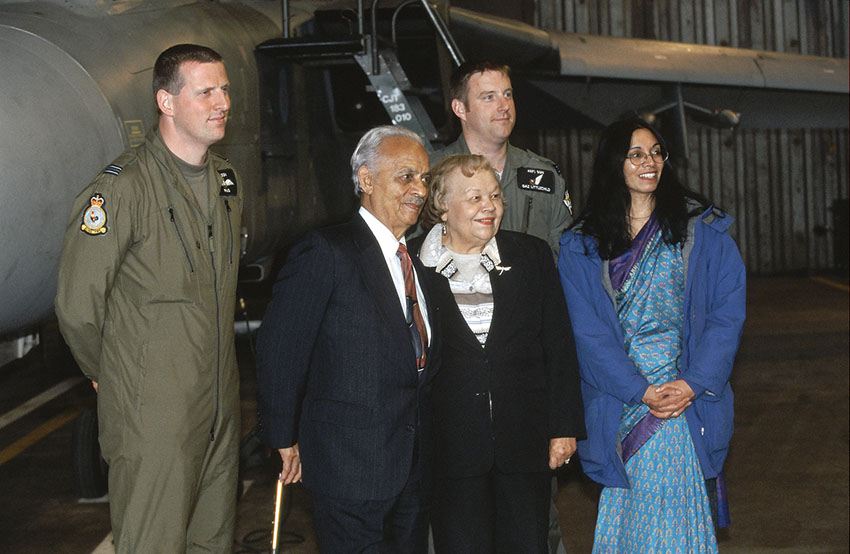 |
 |
 |
From left to right, starting top row:
1. Lt Col Carter and Mrs Mildred Carter together with Sitakumari arrive at RAF Leuchars and met by the two Tornado pilots who will be the hosts for the day
2. Introduction to other personnel at the base
3. Meeting core air base personnel
4. In the Tornado cockpit
5. Pilots explain the controls
6. Lt Col Carter now back in charge – as he said, ‘it’s as if I had never left…’
7. Lt Col Carter, Mrs Mildred Carter, Sitakumari and the two pilots who led the day by the aircraft
8. Back at base meeting other personnel
9. The end of a successful and historic day on all sides

